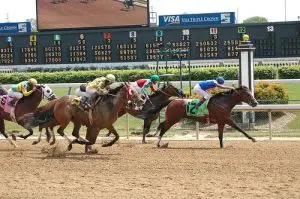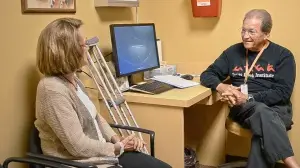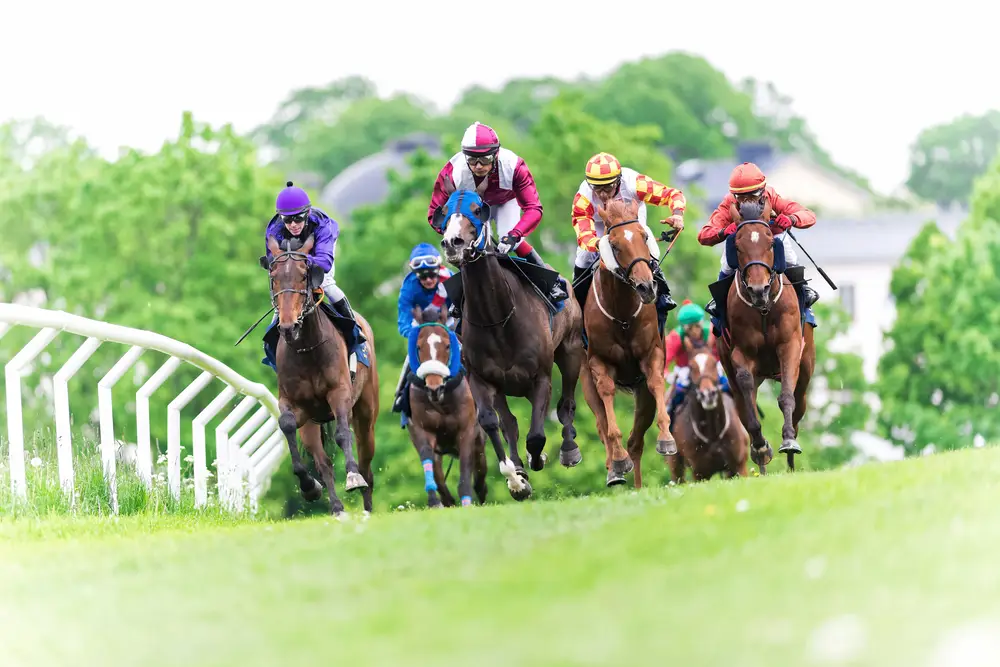
Each year, on the first Saturday in May, horse lovers and sports fans turn their rapt attention to Churchill Downs in Louisville, Kentucky for the “fastest two minutes in sports.” Since its beginning in 1875, The Kentucky Derby has run consecutively each year and has become the premier event in thoroughbred horse racing.
Because of this pomp, pageantry and publicity associated with this race, many amateur riders become interested in equestrian sports and some of these will experience injuries from their new sport – especially in the area of the neck and back. This is where the advice of spine specialists at Texas Back Institute such as Dr. Ralph Rashbaum can come in handy. However, before getting some back health tips for equestrians, let’s take a two-minute look at the Run for the Roses.
A New Method for Qualifying This Year
The Kentucky Derby is a 1 and a quarter mile (2 km) race for 3-year old, thoroughbred horses and is the first race of horse racing’s championship series – The Triple Crown. Sports pundits call the race “The Run for the Roses” because the winning horse is draped with a blanket of stunning spring roses when it is in the winner’s circle after the race.
As every horse racing enthusiasts knows, there are hundreds of thoroughbred horses racing at tracks around the world each week. With this many horses, it’s interesting to note how the top 20 horses are chosen to line up at the gate in Louisville on Derby day. The eventual winner of the Kentucky Derby will have gotten there after competing in races around the country to qualify.
As the website of the Kentucky Derby notes, “This year marks the debut of a new way to determine which horses will join this select and storied field: The Road to the Kentucky Derby is a points-based system that replaces the previous selection method (graded stakes earnings) with a series of key races offering escalating points stakes during the course of the Derby year.
The Road to the Kentucky Derby is a long one, starting with the Prep Season races the previous September and building to a crescendo with the Championship Series in the weeks before the Kentucky Derby. Each race awards the top four finishers points that are tallied across all the races to determine the ranking of horses competing to make it into the Derby.”
For a listing of this year’s qualifying horses and their respective rankings, click here
Questions, Rumors and Facts about the 2013 Derby
As with all high-profile sporting events – the NFL’s Super Bowl, MLB’s World Series, and others – even the most minute facts, trends and rumors about the participants (in this case, the horses) entered in the Kentucky Derby are thoroughly scrutinized by experts and casual fans alike. This year’s Derby has a few questions that add to the drama of the race.
- Highly successful trainer Todd Pelcher has 5 horses in this year’s race and he is teaming up with hall of fame jockey Calvin Borel on one of the favorites in this year’s race – Revolutionary. In 2010, the team of Pelcher and Borel won the Derby with Super Saver. Can they repeat this year?
- One of the prominent prep races, The Bluegrass Stakes, was run on synthetic surface and since Churchill Downs is good, old fashion dirt, handicappers are trying to determine whether the winners of the race on synthetic surface will translate to the dirt track at the Derby.
- Well-known and liked jockey, Gary Stevens, is returning to the sport at age 50. Stevens has been an actor and news anchor since retiring from racing a few years ago and will be riding one of the contenders – Oxbow – in this year’s race. Can someone who is old enough to be the father of most of the other jockeys win the race?
- Highly respected trainer D. Wayne Lukus who is 77 years old and has been enormously successful at the Kentucky Derby will have two thoroughbreds in the race – Oxbox and Will Take Charge. Anytime Lukus has horses in the race, handicappers take notice because of his history.
- The colt, Lines of Battle, is the only European entry in this year’s race and has won races going longer distances than the other horses in the race. Some feel that Lines of Battle is an excellent choice for a long shot.
Enjoy the Ride and Save Your Back
Just as NCAA’s Final Four tournament has the effect of getting many people out, shooting hoops, the Kentucky Derby energizes those who love horses. Since participating in equestrian sports can result in accidents and even long-term damage to the back, some caution and proper techniques should be considered before saddling up. To help us with this we’ve asked Texas Back Institute spine surgeon Dr. Ralph Rashbaum to give us some insights on back safety when involved in horseback riding.
In addition to diagnosing and treating patients with chronic back pain, herniated discs, back injuries and sacroiliac joint dysruption, Dr. Rashbaum has additional knowledge that most back specialists don’t have. He spent 16 years breeding Arabian horses and his wife and daughter have been involved in the sport of Hunter/Jumper equestrian competitions. With the Kentucky Derby approaching the final turn, we asked Dr. Rashbaum for some tips on back safety and riding.
 What is the most serious health problem casual riders and competitors in equestrian sports should be concerned with?
What is the most serious health problem casual riders and competitors in equestrian sports should be concerned with?
The biggest danger to the recreational rider is falling off the horse and injuring his/her spine, long bones (such as legs and arms) and pelvis. After a period of time, the ligaments of the rider get tired or become sore and the muscles become more lax. When this happens, a rider – especially one who does not ride on a regular basis – can be jostled off the horse and take a tumble. This can cause fractures in the vertebra and other injuries we would need to treat.
Are there any dangers to the neck and spine of riders who ride on a regular basis and if so, how can they avoid this?
Riders who spend a lot of time pursuing this sport can experience a pinpoint injury or tenderness in the area where the sacroiliac joint and buttocks meet. This is not a spine injury but is caused by the repetitive concussion of the buttocks on the saddle when the horse is walking or jogging. This is not as big a problem when the horse is galloping. Over time, this can result in a sharp pain. The best way to avoid this injury is to learn the proper posture and techniques for cushioning the constant bouncing when riding. This involves using the thighs and leg muscles to cushion the concussive bounces. This is a great argument for young riders to get professional instruction on riding techniques.
What are some physical signs a horse rider should come see a physician at Texas Back Institute?
Anytime there is a burning pain, particularly if this runs down the leg and lower extremities, these suggest some problems and the rider should come see us. This is sometimes called “sciatica” and can be treated in several ways.
What is your opinion about the athleticism of the professional jockeys that will be riding in the Kentucky Derby Saturday?
They are amazing athletes! Imagine getting into the posture they must get into in order ride – hips flexed, legs underneath, tremendous extension of the torso and neck all while keep their head up – for the length of time of a race. The jockeys who compete at this level have rigorous stretching exercises and are much more flexible than other athletes.
While their numbers are dwindling, there are still many men and women who raise cattle on large ranches. These folks spend a lot of time on horseback and this is not a sport but rather a job. What are the problems they should be aware of?
Cowboys, whether they are working on a cattle ranch or competing in rodeos, have the same potential for concussive damage as a hunter/jumper contestant. Most learn, at an early age, how to reduce the concussive blows by using leg muscles to reduce this. However, rodeo contestants – particularly those who are involved in bulldogging where the cowboy ropes the calf, jumps off the horse, lifts the calf and then ties him – have a high risk of spine damage and disc herniation and we’ve seen a few in our examination rooms.
[youtube=http://youtu.be/E8NkLzH7V8w]
Protecting your neck and spine from wear and tear damage as well as injuries is an important part of enjoying equestrian sports. Plus, now that you have the scoop on the horses in this year’s Kentucky Derby, you’re ready for the race. All you need is a mint julep and you’re good to go!


